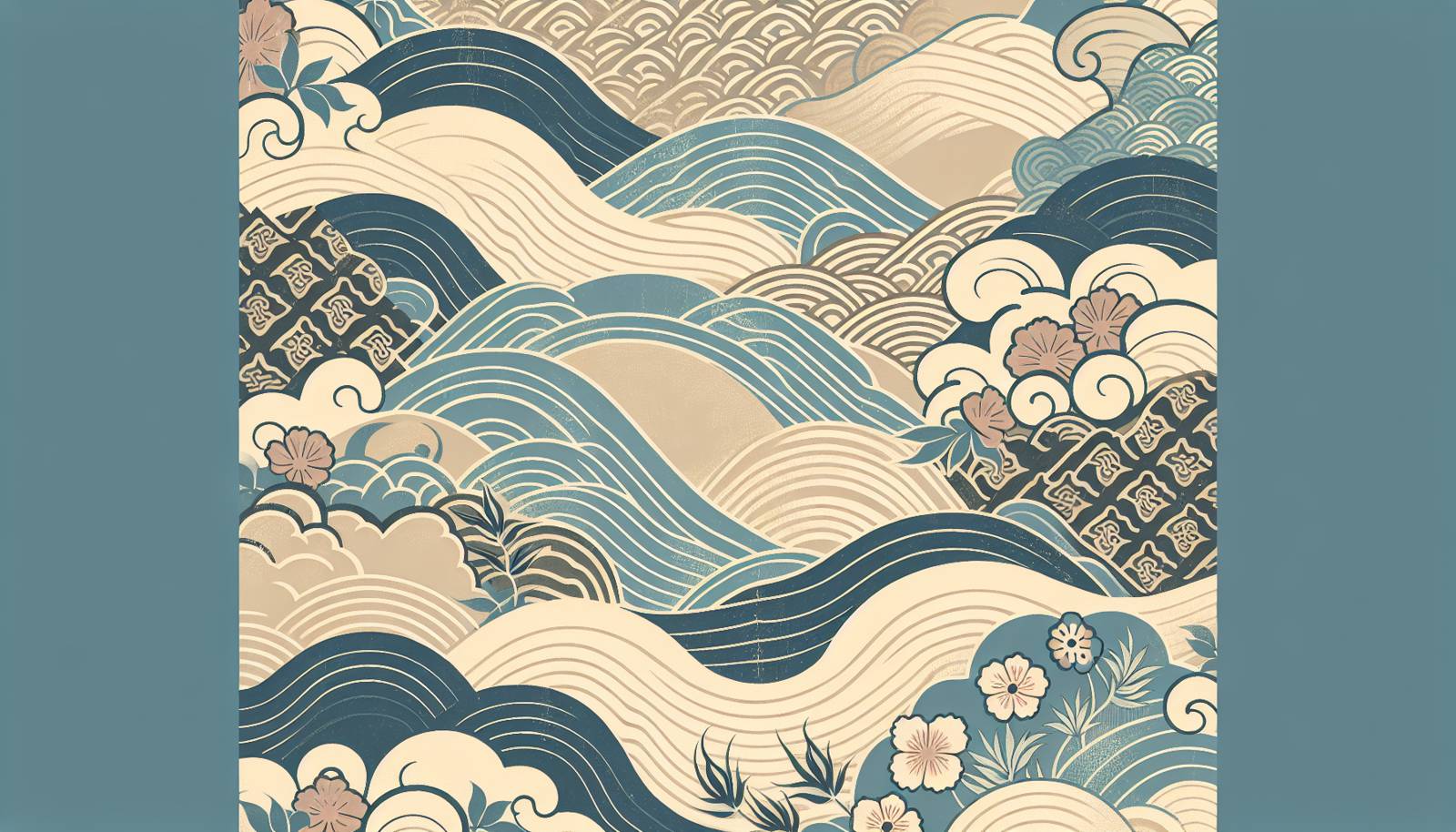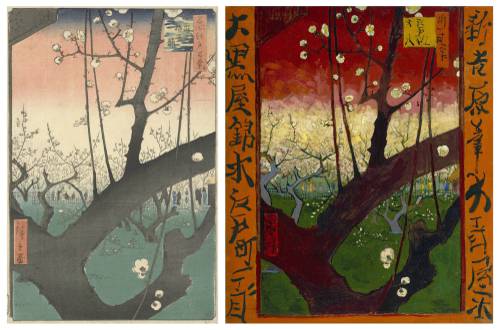
FAQ About The Influence of Japanese Woodblock Printing on European Art

What is Japanese woodblock printing?
Japanese woodblock printing, known as ukiyo-e, is a form of art that originated in Japan during the Edo period (17th to 19th centuries). It involves carving an image into blocks of wood, inking them, and then pressing them onto paper to produce prints. These artworks often depict landscapes, the beauty of nature, and scenes from history and mythology. Ukiyo-e art became widely popular due to its vibrant colors and intricate details.

How did Japanese woodblock printing influence European art movements?
Japanese woodblock prints significantly influenced European art movements, particularly Impressionism and Post-Impressionism. European artists, such as Claude Monet and Vincent van Gogh, were captivated by the bold compositions, use of color, and portrayal of everyday life in ukiyo-e. The emphasis on flat areas of color and stylized figures in the prints encouraged European artists to experiment with similar techniques, reshaping their approach to perspective and the use of space.

Which European artists were influenced by Japanese woodblock prints?
Many notable European artists were influenced by Japanese woodblock prints, including Claude Monet, Vincent van Gogh, Edgar Degas, and Henri de Toulouse-Lautrec. Monet, for instance, drew inspiration from the composition and color schemes of ukiyo-e prints, as reflected in his series of paintings depicting gardens and water lilies. Van Gogh was deeply affected, evident in his vibrant colors and the attention to detail in his work.

What elements of ukiyo-e were adopted by European artists?
European artists adopted several elements from ukiyo-e, including its unique use of line, bold colors, and unconventional perspectives. The flatness and simplicity often found in Japanese prints led to a new emphasis on two-dimensional surface design in European art. Artists also appreciated the depictions of everyday scenes, which resonated with the Impressionists’ interest in modern life experiences.

What is Japonisme?
Japonisme refers to the influence of Japanese art and culture on European society, especially in the late 19th century. It encompasses a wide range of artistic endeavors, from painting to decorative arts, where European artists borrowed elements from Japanese aesthetics. This cultural phenomenon was partly fueled by the opening of Japan to trade and diplomatic relations, allowing increased access to Japanese goods and ideas.

How did ukiyo-e prints become accessible to European artists?
Ukiyo-e prints became accessible to European artists primarily through international trade and exhibitions. The opening of Japan in the mid-19th century allowed Japanese art and artifacts to be imported into Europe. Exhibitions in major cities showcased these prints, which intrigued European artists due to their distinct style and subject matter. Such exchanges fostered a fascination with Japanese culture and aesthetics, known as Japonisme.

What impact did Japanese woodblock printing have on Impressionism?
Japanese woodblock printing had a profound impact on Impressionism by introducing new ways of framing scenes, using color, and depicting everyday life. Impressionists were inspired by the asymmetrical compositions and use of vibrant colors found in ukiyo-e prints. This influence led to paintings that captured the momentary effects of light and color, aiming to portray the world in a fresh, spontaneous manner.

Did Japanese architecture influence European artists alongside woodblock prints?
Yes, Japanese architecture also influenced European artists, alongside woodblock prints. Elements such as the use of space, minimalism, and integration with nature appealed to the European aesthetic. Some artists and architects adopted Japanese styles to create works that blended Western and Eastern influences, impacting the design and philosophy of structures in Europe during the late 19th and early 20th centuries.

How did Vincent van Gogh express his admiration for Japanese prints?
Vincent van Gogh expressed his admiration for Japanese prints by collecting them and incorporating their stylistic elements into his paintings. He admired the use of bold colors and the depiction of nature, often saying that looking at Japanese art made him feel uplifted and joyful. Van Gogh’s artworks, such as "The Courtesan" and his series of blossoming trees, show direct influences from the style and composition of ukiyo-e.

Why were European artists drawn to Japanese woodblock prints?
European artists were drawn to Japanese woodblock prints due to their unique compositional techniques, vibrant colors, and depiction of everyday life. Unlike traditional Western art, ukiyo-e prints often featured innovative perspectives and flat areas of color that were new to European art. This aesthetic offered artists fresh insights and inspiration to break away from conventionalism, encouraging experimentation with new styles and themes.

How did Japanese aesthetics change European perspectives on color and composition?
Japanese aesthetics changed European perspectives on color and composition by encouraging a broader exploration of flatter perspectives, bold colors, and asymmetrical designs. European artists began incorporating more emotional and expressive color palettes, often using contrast to highlight focal subjects and capture the beauty of everyday scenes. This shift helped move European art towards embracing subjective interpretations over strict realism.

What are some characteristics of ukiyo-e prints that influenced Western art?
Characteristics of ukiyo-e prints that influenced Western art include their emphasis on linearity, vibrant color schemes, and asymmetrical compositions. Ukiyo-e prints often depict natural scenes, landscapes, and daily life with simplicity and elegance, paired with a lack of depth perspective which encourages a new narrative structure in visual storytelling. These features were captivating to Western artists who sought innovative visual forms.

How did European perceptions of Japanese culture evolve due to Japonisme?
European perceptions of Japanese culture evolved significantly due to Japonisme, leading to a deeper appreciation for Japan's artistic heritage and aesthetics. Initially seen as exotic, Japanese art became a source of profound inspiration that influenced various European artistic fields. This evolving perception also transformed Japanese items into a symbol of modernity, taste, and sophistication within European circles.

What role did international exhibitions play in spreading ukiyo-e printing to Europe?
International exhibitions played a crucial role in spreading ukiyo-e printing to Europe by showcasing the exquisite art of Japan to a broader audience. Events such as the 1867 Exposition Universelle in Paris allowed artists and collectors to see Japanese art firsthand, leading to increased interest and influence. These exhibitions were instrumental in fostering cross-cultural connections and encouraging artistic exchanges between East and West.

Can the impact of Japanese woodblock prints be seen in any other European movements?
Yes, the impact of Japanese woodblock prints can be seen in various other European movements beyond Impressionism and Post-Impressionism, including Art Nouveau. The elegant lines and intricate patterns characteristic of ukiyo-e influenced the decorative art styles associated with Art Nouveau, emphasizing organic forms and natural themes. This interdisciplinary influence highlights the breadth of Japanese art's impact on European creativity.

Were Japanese woodblock prints appreciated in Europe only by artists?
Japanese woodblock prints were appreciated in Europe not only by artists but also by collectors and the general public. The prints were often seen as exotic and intriguing, leading to their popularity among art enthusiasts and collectors. This broad appreciation contributed to the spread of Japonisme across various societal layers in Europe, influencing fashion, home décor, and popular culture.

What misconceptions did Europeans have about Japanese woodblock prints?
There were several misconceptions held by Europeans about Japanese woodblock prints, primarily related to their origin and cultural significance. Some Europeans initially misunderstood ukiyo-e as solely a decorative art form rather than a significant cultural representation of Japanese life and beliefs. Furthermore, the varied subjects in ukiyo-e—such as kabuki actors and beautiful landscapes—were sometimes viewed through a narrow lens as merely picturesque rather than as reflections of social and political narratives.

How did Claude Monet integrate elements of Japanese prints into his work?
Claude Monet integrated elements of Japanese prints into his work by adopting their compositional styles and bold use of colors. He was particularly inspired by the way Japanese artists handled perspective, often flattening it to emphasize line and color over depth. Monet's garden scenes in Giverny, along with his series on water lilies, reflect the serene detail and vibrant palette typical of ukiyo-e art.

What did French Impressionists admire about ukiyo-e prints?
French Impressionists admired several aspects of ukiyo-e prints, including their use of color, composition, and portrayal of everyday life. The impressionists were drawn to the flat areas of color and the freedom of forms that broke away from traditional Western perspective. This provided inspiration to depict fleeting moments and experiences, aligning with their goal to capture the effects of light and atmosphere in their work.

Did Japanese woodblock printing influence any modern European art forms?
Japanese woodblock printing did indeed influence modern European art forms, including graphic design and contemporary illustration. The principles of flatness, simplicity, and vibrant color found in ukiyo-e prints have been adopted by modern artists and designers to create compelling visuals. Additionally, the influence extends into modern architecture and fashion design, where minimalist and nature-inspired elements are appreciated and reflected in European works.
